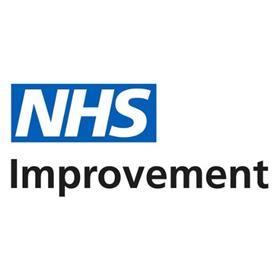GE Healthcare Finnamore’s Michael West writes about NHS Improvement’s guidance on leadership and governance using the well led framework

NHS Improvement’s June 2017 guidance on Developmental reviews of leadership and governance using the well led framework provides an opportunity for trusts to not only review their current arrangements, but also to take a wider view of the changing challenges of governance and their response.
A review of the new framework – in light of how a variety of trusts have worked with the old one – reveals increased expectations but also some real opportunities to make reviews as helpful and developmental as possible.
The changing focus of leadership
The most obvious change is the focus of the new guidance on leadership in its widest sense, replacing a previous focus on the board. There are two key aspects to this:
We need significant – and sustained – internal communication efforts to which managers and leaders throughout the organisation are bought into
First, many requirements relate to “senior leaders”. As defined in the guidance, this includes not only executive and non-executive directors but also their direct reports. While providing a clear opportunity to delve much deeper into how an organisation is led, this change raises the stakes significantly in terms of the number of people from whom the skills, disciplines and mindset of senior leaders is expected.
Second, there is a complementary focus on “leaders throughout the organisation.” This will put a real spotlight on the extent to which trusts are engaging at all levels and taking their staff with them.
 Michael West
Michael West
In our experience this is an area where even a good trust can struggle, as staff fully occupied with day to day duties often find it challenging to engage at a wider organisational level. This can be overcome only by significant – and sustained – internal communication efforts to which managers and leaders throughout the organisation are bought into.
Data in detail
The Well Led framework’s focus on ensuring that high quality data is analysed and challenged is developed to a much greater level of detail in the new guidance. Underneath the broad heading of “appropriate information being effectively processed, challenged and acted on” sit specific prompts on areas, including submission of information to regulators, use of IT systems, and the handling of patient identifiable data and records.
This is, therefore, an area in which the new guidance provides a much more ambitious – and much more prescriptive – framework. In some trusts, meeting these requirements fully would require not only governance changes but investment in IT and, importantly, also in how frontline managers are trained and supported in using data to manage services and change.
This will provide a particular challenge to trusts which currently are working effectively with “non-technological” information and reporting systems. Data held on a service manager’s spreadsheet will no longer be sufficient, even if it is up to date and analysed effectively for reporting up.
Innovation and continuous improvement
The new framework continues and develops the previous focus on continuous improvement. As with requirements relating to data, this increased profile also includes a more prescriptive set of requirements for good practice. There should now be not just a “strong focus” on continuous learning, but “organisational systems to support improvement and innovation work, including staff objectives, rewards, data systems and ways of sharing improvement work.”
Consistent with the wider focus of the guidance as a whole, the focus is on improvement and innovation at all levels, not just senior leaders or specific improvement teams.
As in other areas, the guidance’s good practice sets a high bar. The suggestion – carried over and developed from the previous framework – that “staff regularly take time out to review individual and team objectives, processes and performance…[and] this is used to make improvements” will be very tough to meet consistently given current service pressures. However, all trusts should be mindful of the wider principle of which this specific example is part: that staff are thinking about not just performing their duties but also improving them – and have the data to support them in doing so.
This is an area which provides a real opportunity for high performing trusts to flourish – showing how they are not just meeting the requirements asked of them (the focus of many areas of the guidance) but also improving themselves and contributing to improvement and innovation in others.
A more flexible process
Perhaps the most important change, however, is not within the content of the guidance, but in how trusts (including for the first time foundation trusts and non-FTs on equal terms) are expected to engage with it.
Whilst more prescriptive in some areas, the new framework also provides significant freedoms and flexibilities which trusts can put to good use as part of their development
Under the new guidance trusts must conduct a review at least every five years, with a clear recommendation of review every three years, although this could be longer “when risks seem lower” and would be expected to be shorter “when risks seem higher”. (Risks suggested in the guidance include ”significant turnover of board members, organisational transactions, or significant deterioration in some aspect of performance.”)
More importantly however, the new guidance gives trust much greater freedom over the overall focus, objectives and tone of the review. Our experience of Well Led Reviews was that trusts recognised their value as much (or more) as opportunities for development – no matter their current position – than as exercises in regulatory compliance. The new guidance makes this explicit, and significantly increases trust opportunities in this area.
The challenge will be using these freedoms to best effect. Options in this area might include:
- A more indepth “deep dive” review. This would be particularly appropriate for developing the leadership domain, which (as discussed above) now permeates much more widely within the organisation, when compared to the previous focus on the board and executive. In this way, the review could contribute to emerging people and talent management strategies, as well as OD strategies and regulatory compliance.
- A review which draws much more heavily on self-review, (the guidance makes clear that trusts should carry out “regular self review” as part of the review process, including some ideas about how this might be done) and in which organisational leaders (including, but not limited to, the board) become effective partners in the review process – whilst being careful to safeguard the independent judgements of the external review team. This provides an opportunity for board members and other senior leaders to rapidly increase their learning and insights into the organisation, as well as taking ownership of the organisation’s current challenges and future strategic direction.
- An overview review across all eight key lines of enquiry, followed by targeted work focussing on those where most development is needed. Our experience suggests that effective use of data and the technology to support it (KLOE 6) and ensuring that continuous learning and innovation are truly embedded within organisational culture (KLOE 8) – as discussed above – could be priorities for many.
This new review framework provides an opportunity for trusts to take stock and ensure that their next review works for them in the best possible way. Whilst more prescriptive in some areas, the new framework also provides significant freedoms and flexibilities which trusts can put to good use as part of their development.
Michael West is a consulting manager at GE Healthcare Finnamore
For more information contact Isobel Gowan, director at GE Healthcare isobel.gowan@ge.com
For more information on the Well Led Framework visit https://improvement.nhs.uk/uploads/documents/Well-led_guidance_June_2017.pdf


























1 Readers' comment